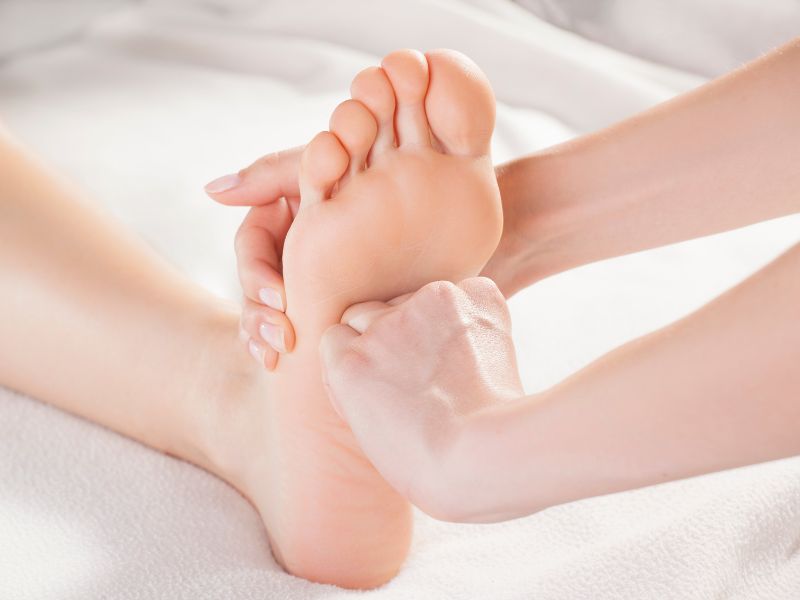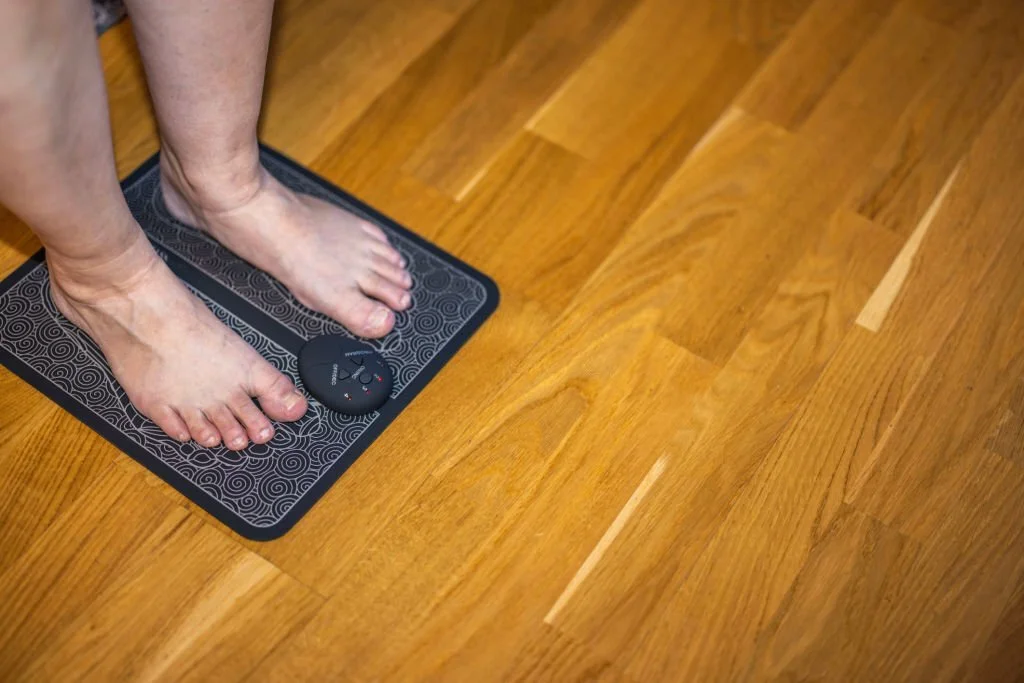In today’s fast-paced world, getting a good night’s sleep has become a luxury. Stress, anxiety, and various health issues often contribute to restless nights, leaving us feeling drained and fatigued the next day. However, there’s a natural and effective solution to promote better sleep: foot massage. A soothing foot massage not only helps you unwind but also targets specific pressure points that can improve your sleep quality. In this article, we will explore the benefits of foot massage for improved sleep, its techniques, and frequently asked questions to help you experience more restful nights.
Foot Massage for Improved Sleep: A Natural Sleep Aid

Having trouble falling asleep or staying asleep throughout the night can be frustrating and disruptive to our overall well-being. Incorporating foot massage into your bedtime routine can be a game-changer in achieving a restful sleep. Let’s delve into how foot massage can contribute to improved sleep:
1. Relaxation and Stress Relief
Foot massage is known for its ability to induce deep relaxation and alleviate stress. As we go about our day, tension accumulates in our feet, leading to discomfort and restlessness. A gentle foot massage helps release this tension and encourages a sense of calmness and tranquility, preparing your body and mind for a peaceful slumber.
2. Stimulation of Pressure Points
The human foot contains numerous pressure points that are connected to various organs and systems in the body. By massaging specific points on the feet, you can stimulate these corresponding areas and promote their optimal functioning. This stimulation can help balance the body’s energy flow and contribute to better sleep patterns.
3. Improved Circulation
Proper blood circulation is crucial for our overall health, including sleep quality. By massaging the feet, you enhance blood flow to the extremities, reducing any potential discomfort caused by poor circulation. The increased blood circulation can also aid in delivering vital nutrients and oxygen to the body’s tissues, promoting relaxation and supporting better sleep.
4. Reduction of Pain and Discomfort
Foot massage can be particularly beneficial if you suffer from chronic pain conditions, such as plantar fasciitis or arthritis. By targeting specific areas and applying gentle pressure, you can alleviate pain and discomfort, allowing you to find a more comfortable position for sleep. Reduced pain levels can significantly impact your ability to fall asleep quickly and enjoy uninterrupted rest.
5. Melatonin Boost
Melatonin, often referred to as the “sleep hormone,” plays a crucial role in regulating our sleep-wake cycle. Studies have shown that foot massage can increase the production of melatonin, leading to improved sleep duration and quality. Incorporating a relaxing foot massage into your nightly routine can help boost your melatonin levels and enhance your sleep experience.
Foot Massage Techniques for Improved Sleep

Now that we understand the benefits of foot massage for sleep, let’s explore some effective techniques that you can incorporate into your bedtime routine:
1. Aromatic Foot Soak
Begin your foot massage experience with a soothing aromatic foot soak. Fill a basin with warm water and add a few drops of lavender or chamomile essential oil. Immerse your feet in the fragrant water for 10-15 minutes, allowing the warmth and calming scent to relax your body and mind.
2. Thumb Walking Technique
Sit comfortably with one foot resting on your opposite thigh. Apply a small amount of massage oil or lotion to your hands. Using your thumbs, apply gentle pressure to the sole of your foot and move them in a slow, rhythmic motion from the heel to the toes. Repeat this thumb walking technique for 5-10 minutes on each foot.
3. Circular Thumb Technique
After the thumb walking technique, transition into the circular thumb technique. With your thumbs, make small circular motions on the sole of your foot, focusing on the arch area and the ball of the foot. This technique helps relieve tension and stimulates the pressure points related to sleep. Perform the circular thumb technique for another 5-10 minutes on each foot.
4. Toe Stretching
Toe stretching is a simple yet effective technique to relax the muscles and joints in your toes. Hold your foot with one hand and gently rotate each toe, first in one direction and then in the opposite direction. After rotating each toe, hold it between your thumb and index finger and gently pull it away from the foot, stretching the muscles. Repeat this process for each toe on both feet.
5. Finishing with a Foot Rub
To conclude your foot massage session, give your feet a gentle rub using both hands. Apply long, sweeping strokes from the ankle to the toes, focusing on relaxing the entire foot. This final step promotes overall relaxation and allows the benefits of the massage to fully integrate into your body.
By following these foot massage techniques regularly, you can create a relaxing bedtime ritual that supports your sleep hygiene and helps you achieve a more restful night.
FAQs (Frequently Asked Questions) about Foot Massage for Improved Sleep
Q1: How often should I perform foot massage for improved sleep?
A1: To experience the benefits of foot massage for improved sleep, aim to perform it at least three times a week. Consistency is key in allowing your body to adapt and respond to the massage techniques.
Q2: Can I perform foot massage on myself, or do I need a professional?
A2: Foot massage can be self-administered or performed by a professional massage therapist. If you choose to do it yourself, ensure you follow proper techniques and use adequate pressure. If you have specific health concerns or chronic conditions, consulting a professional may be beneficial.
Q3: How long should a foot massage session last?
A3: A typical foot massage session can last anywhere between 15 to 30 minutes. However, you can adjust the duration based on your personal preferences and needs.
Q4: Are there any contraindications or precautions I should be aware of?
A4: While foot massage is generally safe for most individuals, there are a few precautions to keep in mind. Avoid foot massage if you have open wounds, infections, or fractures in your feet. If you’re pregnant or have certain medical conditions, such as diabetes or circulatory disorders, consult your healthcare provider before incorporating foot massage into your routine.
Q5: Can foot massage help with conditions like insomnia or sleep apnea?
A5: Foot massage can contribute to better sleep by promoting relaxation and reducing stress. However, it should not be considered a standalone treatment for chronic sleep disorders like insomnia or sleep apnea. If you’re experiencing persistent sleep issues, consult a healthcare professional for a comprehensive evaluation and appropriate treatment options.
Q6: Can I use essential oils during foot massage for improved sleep?
A6: Yes, incorporating essential oils known for their calming properties, such as lavender or chamomile, can enhance the relaxing effects of foot massage. Dilute the essential oil with a carrier oil, like coconut or almond oil, before applying it to your feet.
Conclusion
Incorporating foot massage into your bedtime routine can be a transformative addition to your sleep hygiene practices. By promoting relaxation, stimulating pressure points, improving circulation, and reducing pain, foot massage offers a holistic approach to enhancing your sleep quality. Remember











Leave a comment